My second experiment was a notebook bound with a variation of the Japanese stab binding. The materials I used for this project are traditional Japanese paper for the inside and recycled coffee paper for the cover.
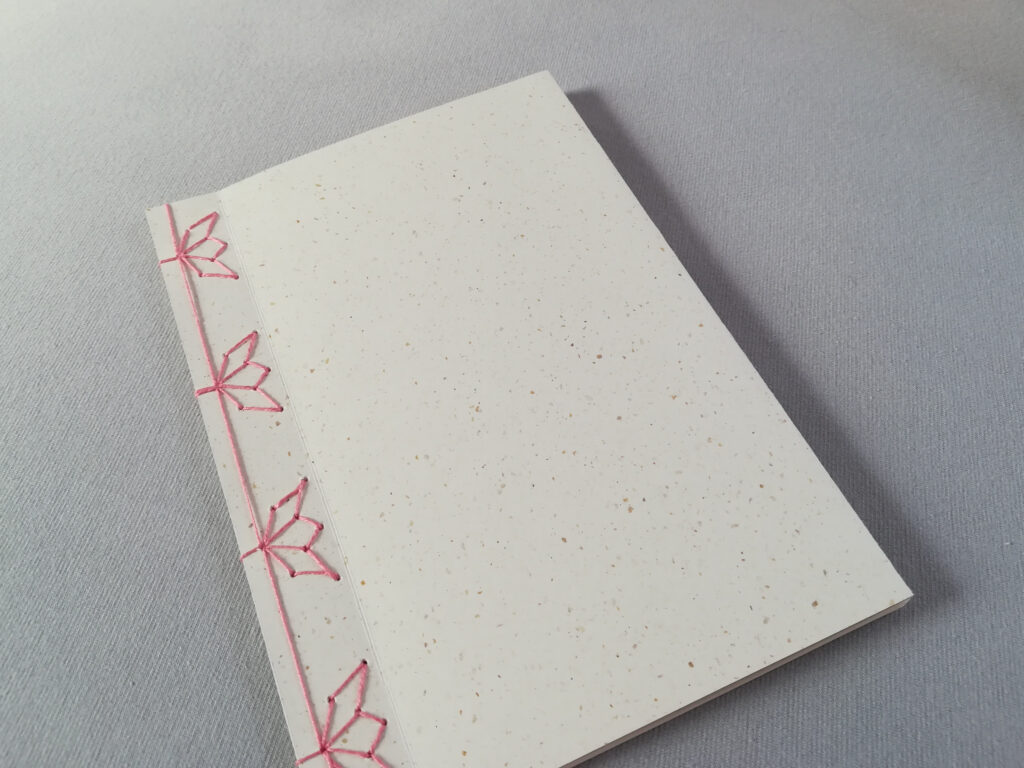
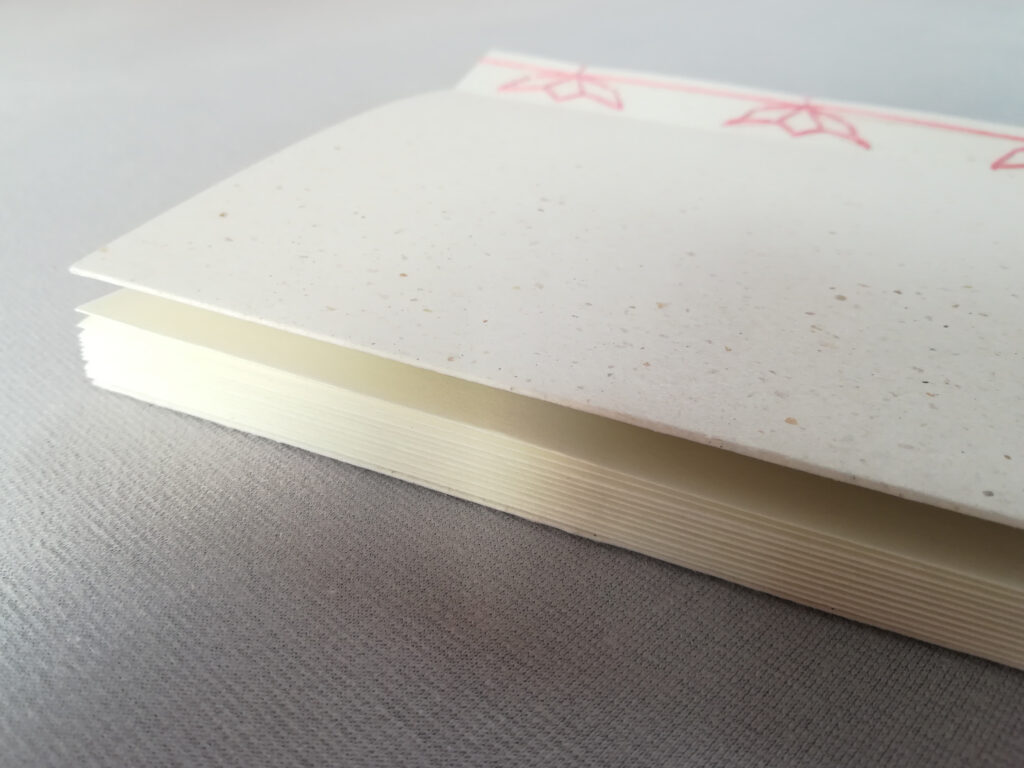
The inside is made up of traditional Japanese paper, which is slightly see-through – I made use of this feature, by printing lines and a decorative border of flowers on one side of the paper and then folding it in half, so that the ink was on the inside of each sheet. To make the effect work, the side where the paper is folded, is on the open side of the book, and the opening of each sheet is bound together and forms the spine. This prohibits people opening up each sheet of paper and encloses the design on the inside. I used a very small stroke weight, so the lines are very subtle and best seen when held against sunlight. The notebook is made up of 11 sheets of paper, and the decorative flower border becomes longer from page to page: On the first page only one single leaf can be seen, on the last page the whole edge is filled with flowers.
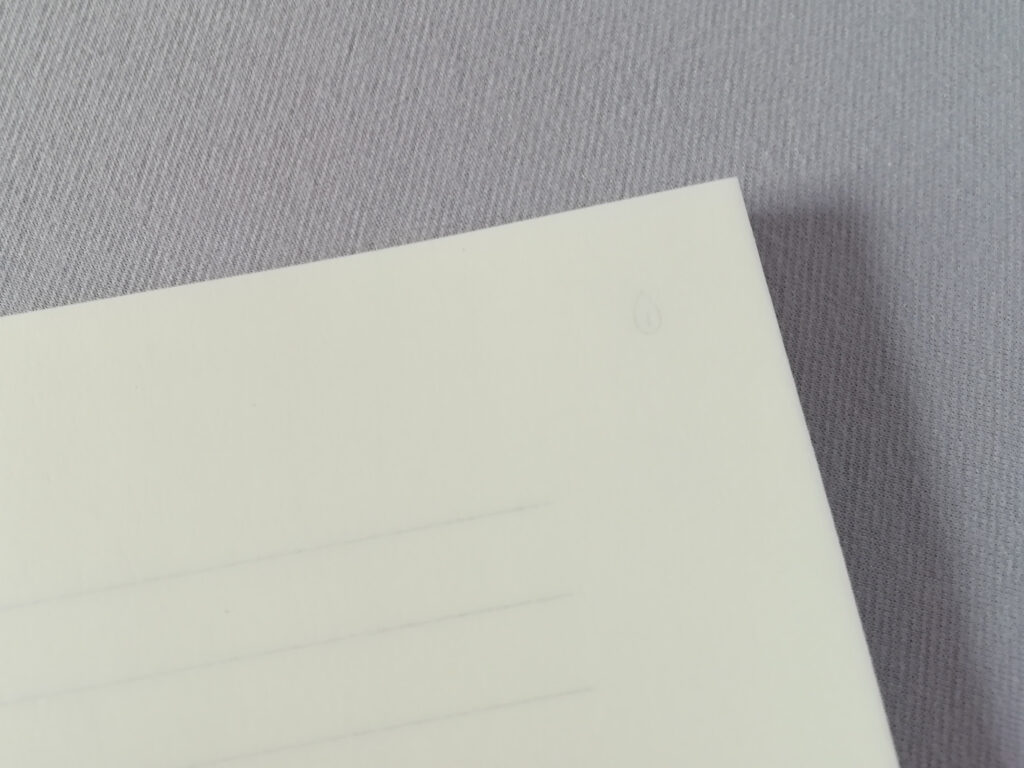
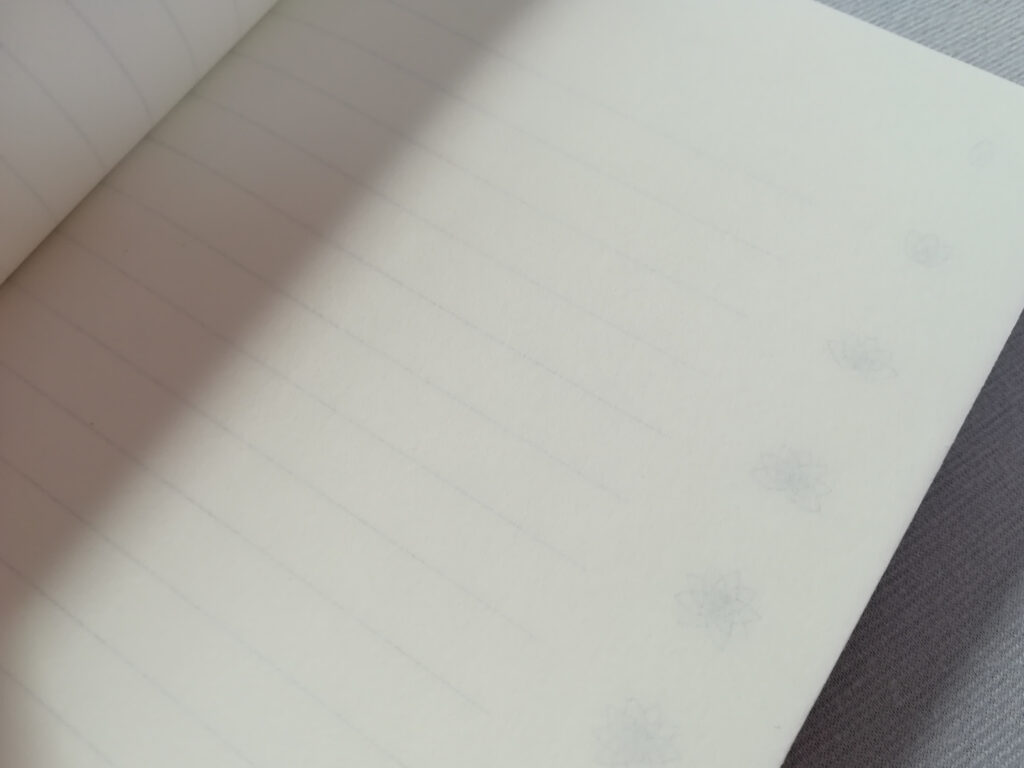
For the cover I picked a recycled coffee paper, which is of creme color and has a beautiful texture. I decided to create a flap on the front and back of the notebook to add stability to the cover.
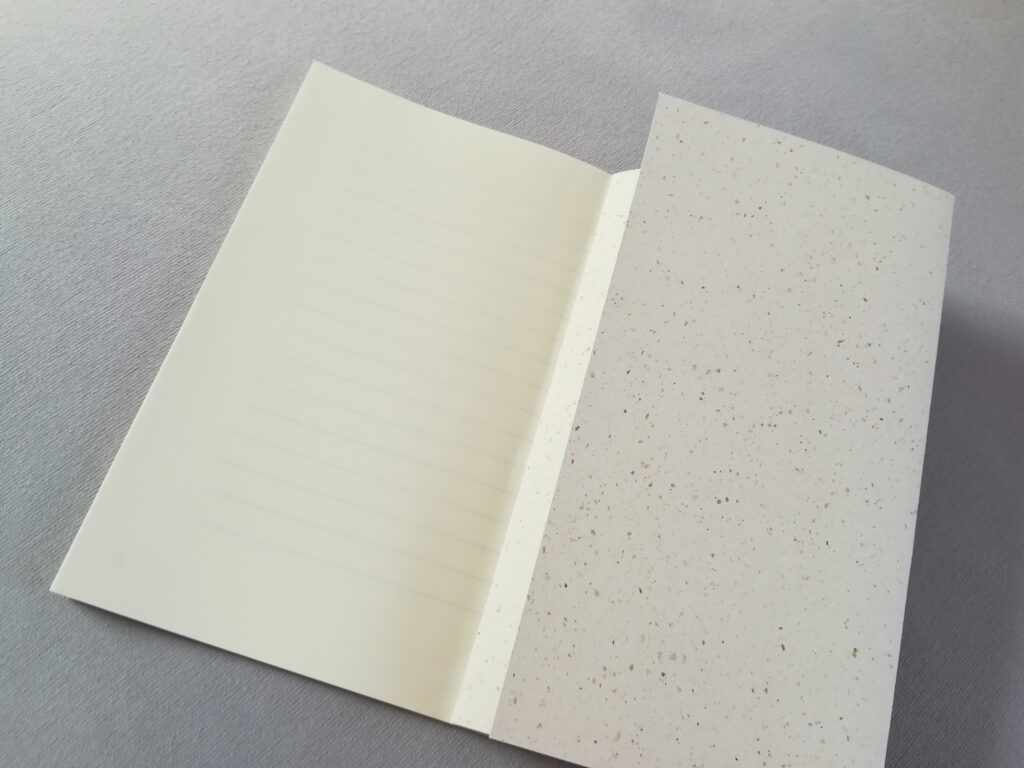
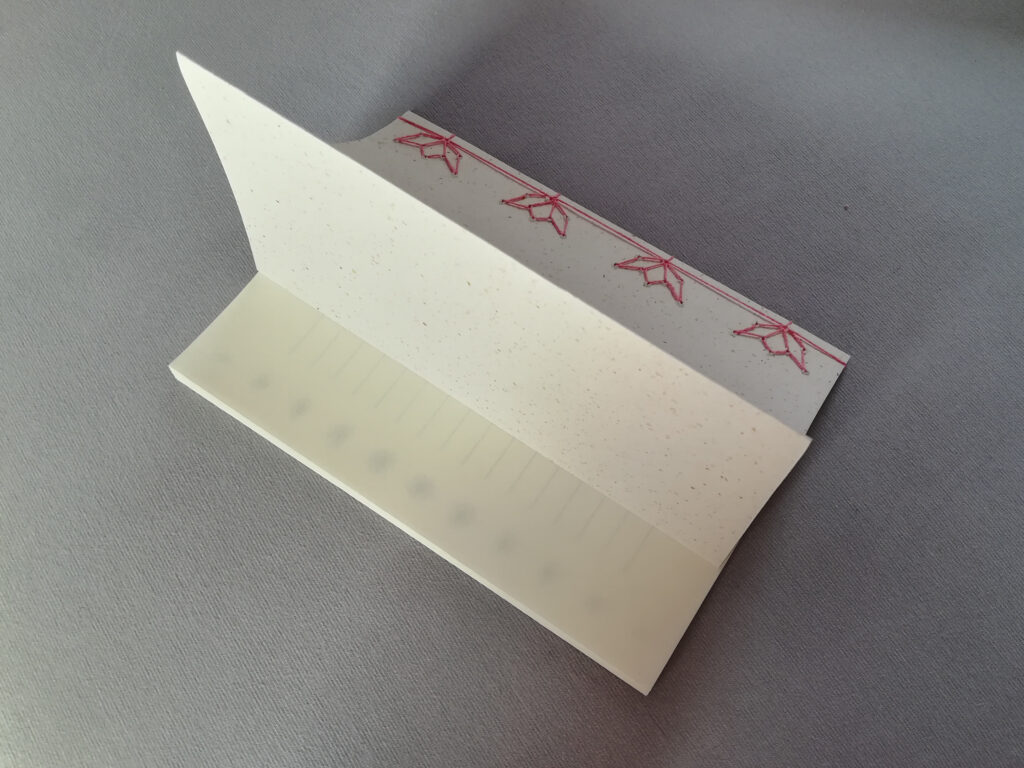
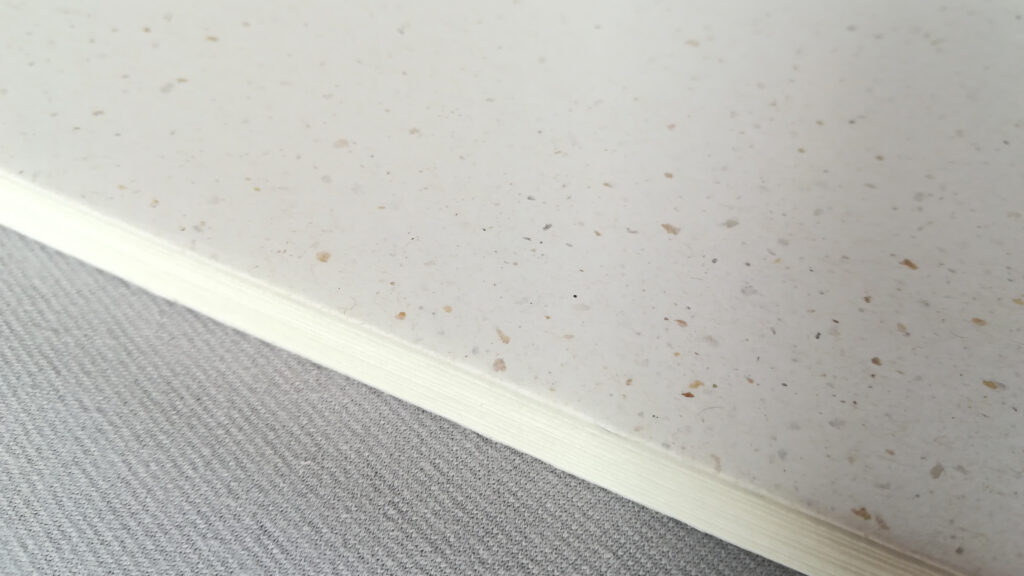

Instead of a classic Japanese stab binding, I decided to use a variation, which forms flowers. I used a pattern which I found online for reference. The pink thread underlines the delicate nature of the notebook and fits well with the flower edge design of the inside.
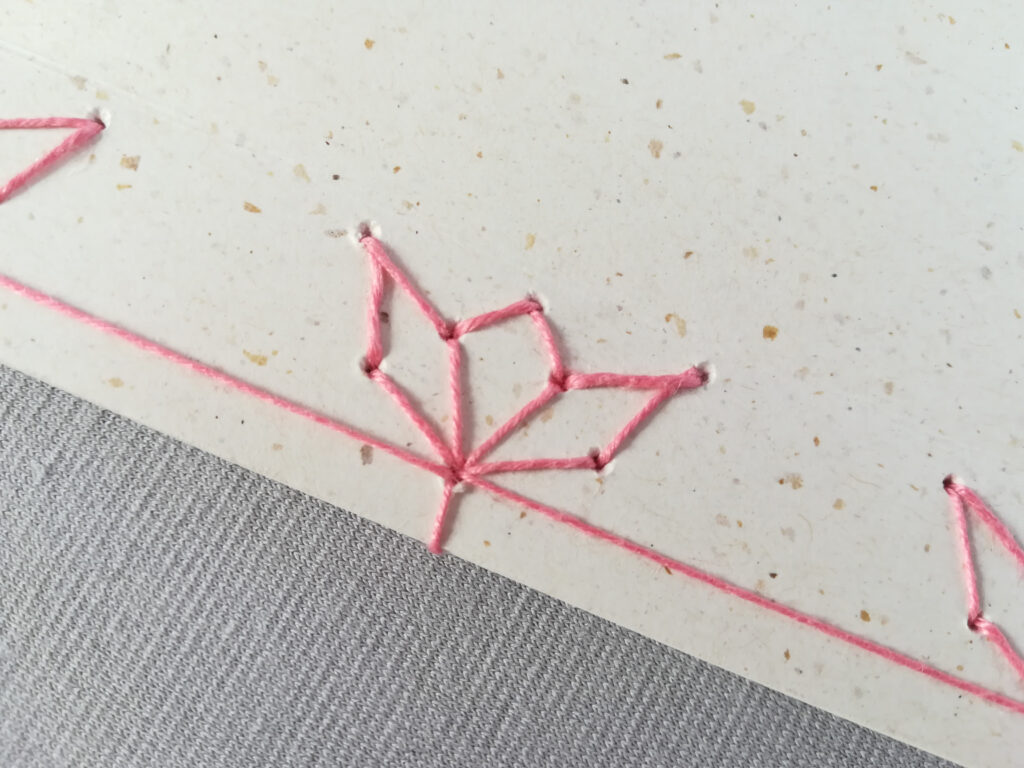
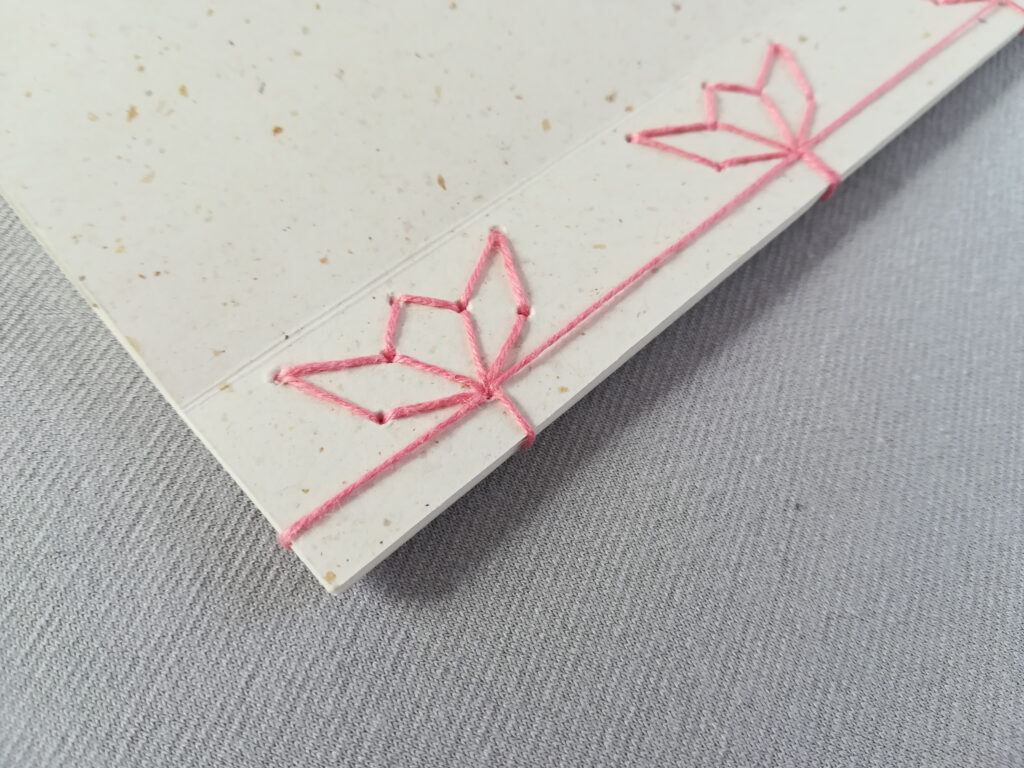
This experiment was a great success, as everything came together very nicely and no major issues arose during the production. My only small critic would be the holes, which frayed a little on the backside of the cover, but it’s only a minor problem.